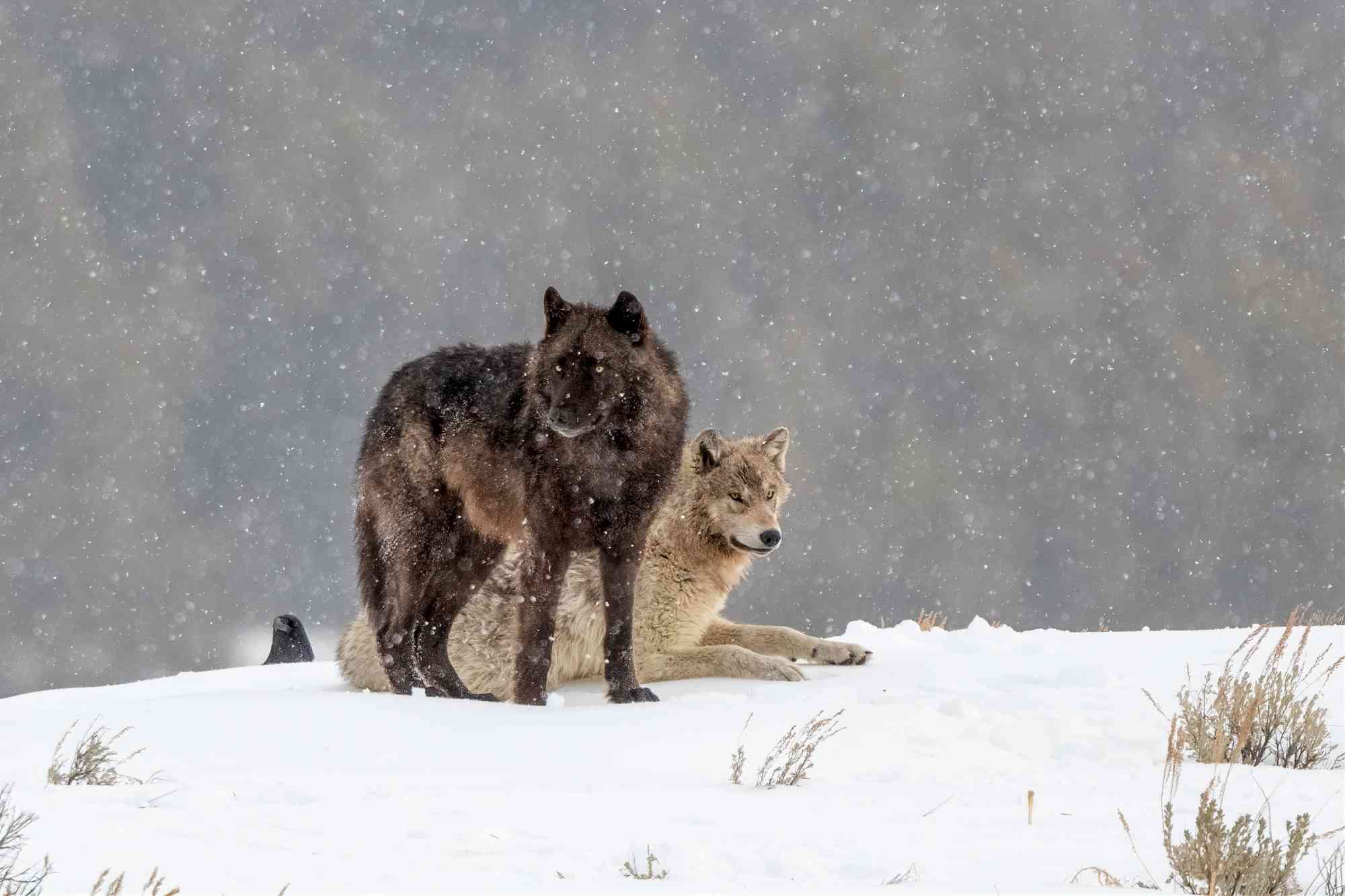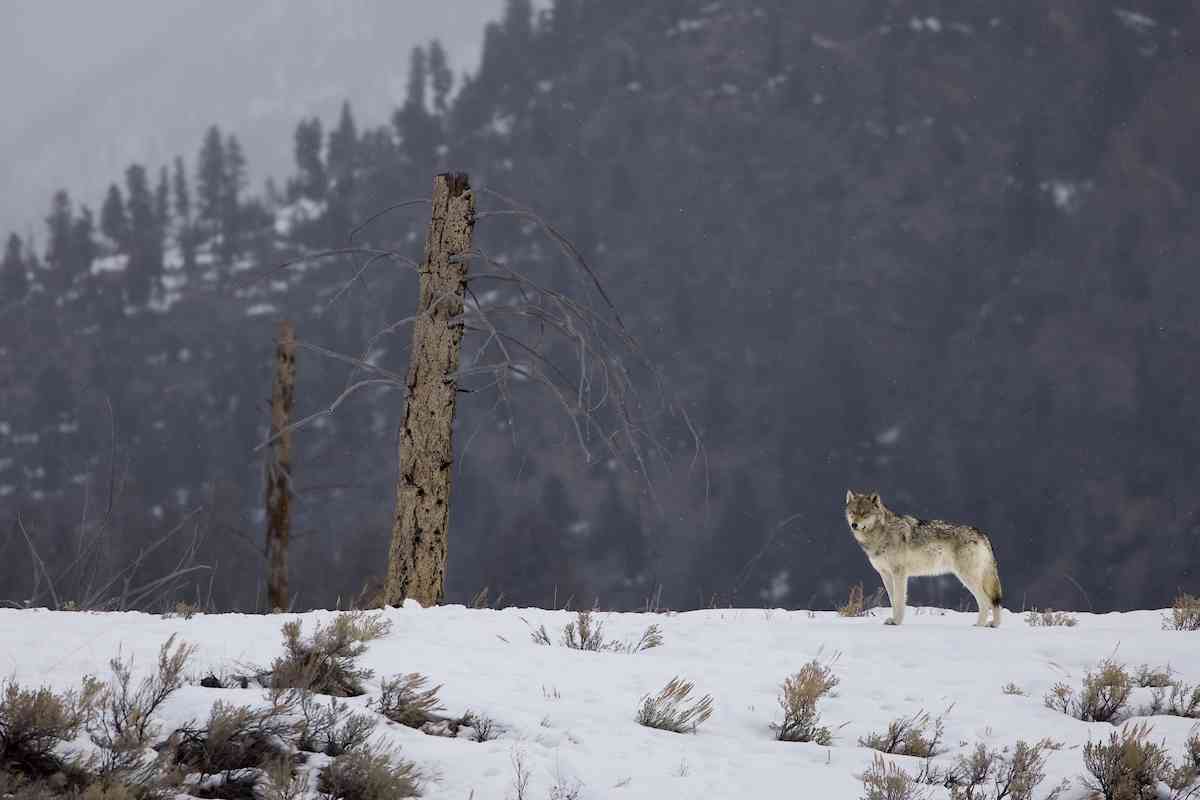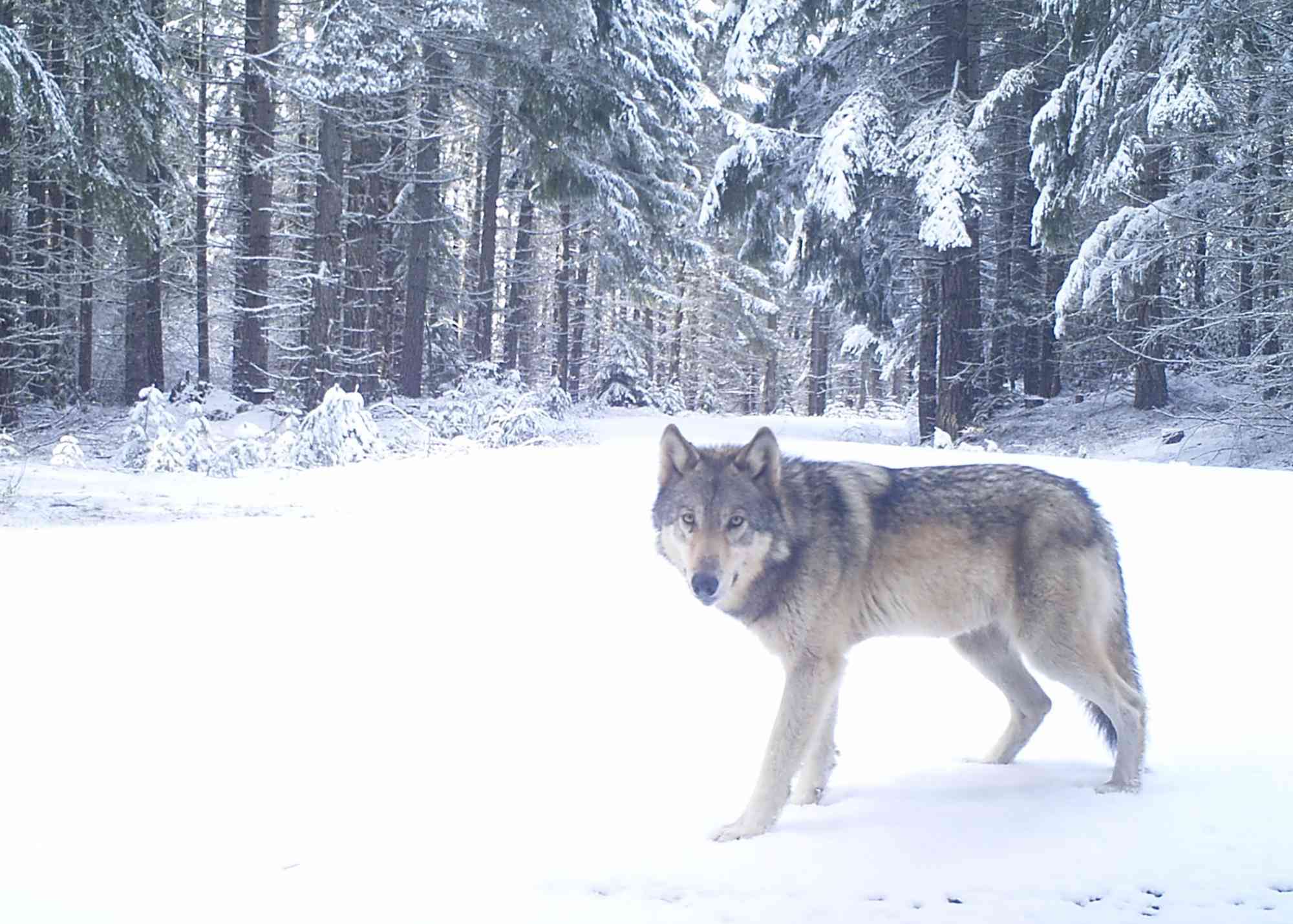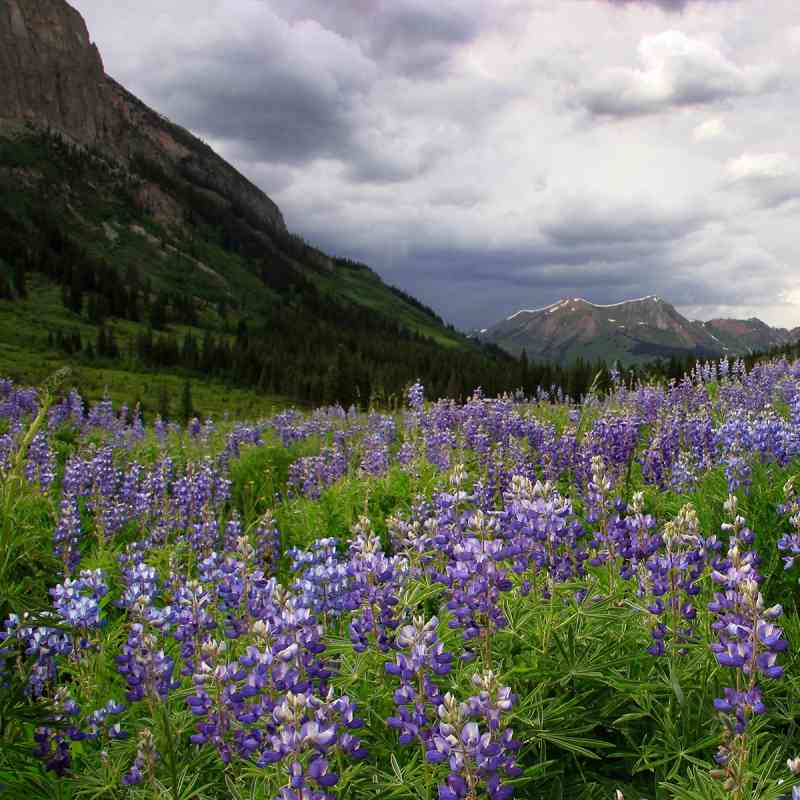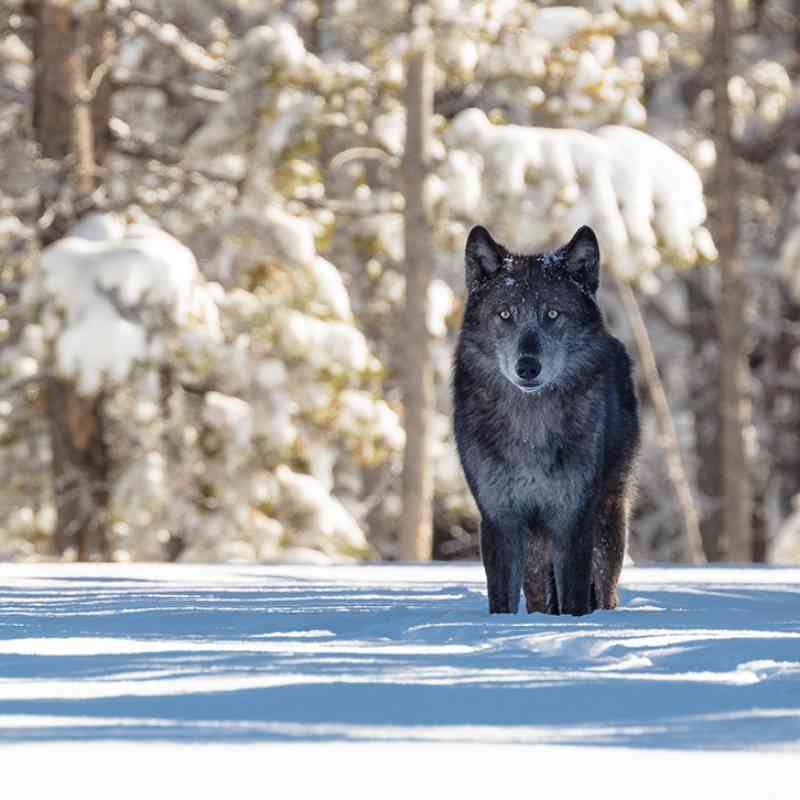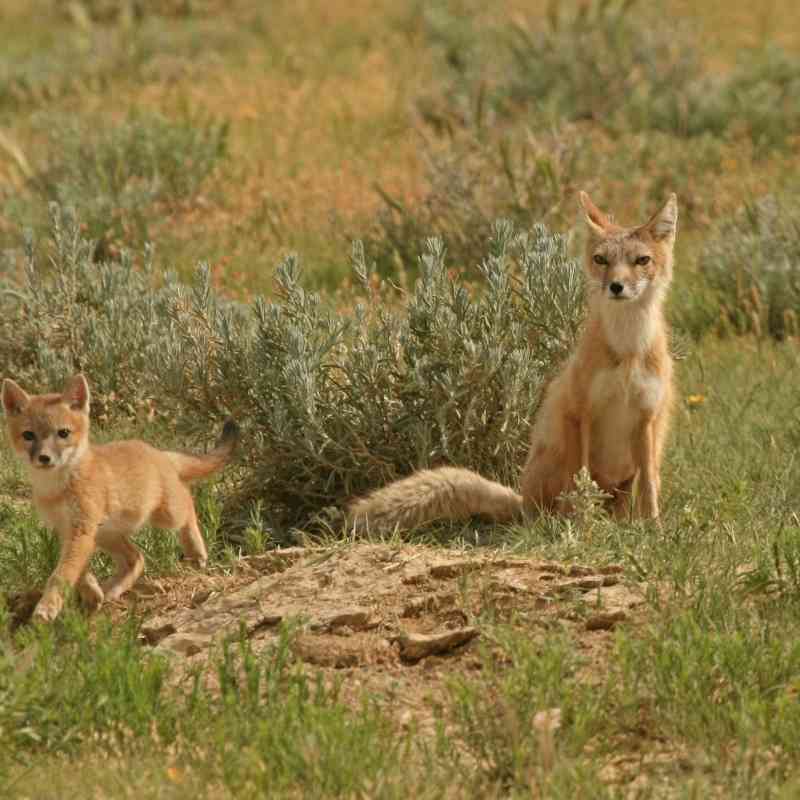The U.S. Fish and Wildlife Service’s rule to manage gray wolves in Colorado became effective today, Dec. 8. As part of the state-led wolf restoration process, Colorado Parks and Wildlife requested the FWS establish what is known as a “10(j) rule” under the Endangered Species Act. Read on to find out what this means for wolves returning to the southern Rockies this winter!
What is a 10(j) Rule?
Wolves were one of the first species to be added to the national endangered species list in 1974. After being unlawfully removed by the Trump administration in January 2021, gray wolves were reinstated as an endangered species under the ESA 13 months later, restoring their federal protection in most states, including Colorado. The ESA broadly protects endangered species from being killed, injured, captured or harassed.
Section 10(j) of the ESA helps agencies reintroduce endangered species outside their currently occupied range to promote their overall recovery. As such, the FWS has issued a 10(j) rule for every wolf reintroduction to date.
This latest 10(j) rule designates gray wolves in Colorado as a “nonessential experimental” population. The “nonessential” label suggests that if the reintroduction is unsuccessful, the overall existence of gray wolves as a species is not at risk. The “experimental” label means that individuals within the designated boundary may be treated as “threatened” under the ESA even if other populations of the species are endangered.
What does this mean for Colorado’s wolves?
As a leader in wolf restoration, Defenders of Wildlife is committed to seeing the return of healthy wolf populations in Colorado. While we support the use of section 10(j) as a tool to help facilitate the reintroduction, time will tell whether details of this rule will adequately support lasting recovery in the southern Rockies.
Where does the rule apply?
This 10(j) rule applies to the entire state of Colorado and any wolf found within it, regardless of how or when the wolf arrived. Therefore, these new regulations impact the wolves reintroduced by the state, as well as the two remaining wolves that settled in the North Park basin in 2021. Conversely, if any wolves from Colorado were to roam to neighboring states, they would take on the federal listing status of that location.
What types of management are now authorized?
Under this 10(j) rule, wolves in Colorado — which are otherwise an endangered species protected from harassment and removal — may be nonlethally deterred or even killed under specific circumstances.
This 10(j) rule authorizes certain nonlethal methods of deterring wolves away from livestock, such as noise makers and scare devices. Having the full suite of available tools is critically important to our coexistence efforts in Colorado, where we partner directly with ranching communities to reduce and address conflicts.
Our concern with this rule lies in the extent of when lethal removal is allowed. CPW must prioritize the use of nonlethal measures for mitigating wolf-livestock interactions so that lethal take is not necessary. The agency should also use its discretion to ensure lethal control is a last resort and strictly limited to confirmed chronic conflicts where nonlethal approaches are exhausted.
What are the final preparations for reintroduction?
With the federal 10(j) rule finalized and the state management plan complete, CPW is ready to meet the voters’ mandate and begin reintroducing wolves this month. From December 2023 through March 2024, up to 10 wolves will be captured from Oregon and released on state-owned lands in Summit, Eagle and Grand counties. The Oregon and Colorado state agencies are working together to ensure these wolves are healthy and do not have a recent history of conflict with livestock.
The three-year planning effort is coming to a close and we are turning to a new, exciting chapter in restoring wolves to their historical range. As more wolves return to the southern Rockies, Defenders is quickly expanding our efforts to partner with more livestock producers learning how to live and work with wolves on the landscape. Stay tuned for more exciting stories once paws are on the ground!
Author

Kaitie Schneider
comments
Wildlife & Wild Places

